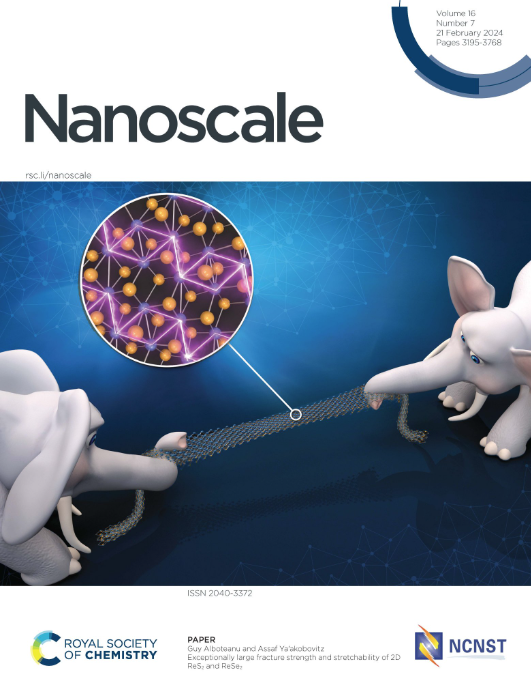Unraveling the Time Course of Interaction between DNA Nanopores and Lipid Bilayers using QCM-D: Role of Cholesterol Anchors and Bilayer Supporting Substrates
IF 5.8
3区 材料科学
Q1 CHEMISTRY, MULTIDISCIPLINARY
引用次数: 0
Abstract
Lipid membranes are fundamental elements of cells, serving as barriers that protect the cell interior from the external environment. DNA nanostructures, which can engineer lipid membranes' signal transduction and substance exchange properties, attract interest for their potential applications in the biomedical field. The interaction between DNA nanostructures and lipid membranes is of scientific and technological interest. Here, we investigate the interaction between DNA nanopores (DNPs) and model supported lipid bilayers (SLBs) using real-time quartz crystal microbalance with energy dissipation monitoring (QCM-D). The long observation time and high temporal resolution enable us to visualize the time course of DNPs’ interaction with SLBs, including their tethering and incorporating processes. Benefiting from the ability of QCM-D to obtain adsorbed layers’ viscoelasticity profiles, we found that the DNPs with three cholesterol tags aggregate and form a rigid layer on the SLB surface during their tethering step. Moreover, our results reveal that the supporting substrates of SLBs impact the incorporation of DNPs, whereby separating the SLBs from the SiO2 sensor surface with poly(ethylene glycol) (PEG) polymer cushion results in faster incorporation. This study not only sheds light on the behavior of DNPs but also establishes QCM-D as an analytical platform for exploring the interactions of membrane-interacting DNA nanostructures, potentially accelerating advancements in DNA nanotechnology.利用 QCM-D 揭示 DNA 纳米孔与脂质双分子层之间相互作用的时间过程:胆固醇锚和双分子层支持底物的作用
脂质膜是细胞的基本成分,是保护细胞内部不受外界环境影响的屏障。DNA纳米结构可以改造脂质膜的信号转导和物质交换特性,在生物医学领域具有潜在的应用前景。DNA纳米结构与脂质膜之间的相互作用具有重要的科学和技术意义。在这里,我们利用实时石英晶体微平衡和能量耗散监测(QCM-D)研究了DNA纳米孔(DNPs)和模型支持脂质双层(slb)之间的相互作用。较长的观测时间和高时间分辨率使我们能够可视化DNPs与slb相互作用的时间过程,包括它们的捆绑和合并过程。得益于QCM-D获得吸附层粘弹性分布的能力,我们发现具有三个胆固醇标签的DNPs在其系结步骤中聚集并在SLB表面形成刚性层。此外,我们的研究结果表明,slb的支撑底物影响DNPs的掺入,因此用聚乙二醇(PEG)聚合物缓冲垫将slb从SiO2传感器表面分离可以更快地掺入。这项研究不仅揭示了DNPs的行为,而且还建立了QCM-D作为探索膜相互作用DNA纳米结构相互作用的分析平台,有可能加速DNA纳米技术的进步。
本文章由计算机程序翻译,如有差异,请以英文原文为准。
求助全文
约1分钟内获得全文
求助全文
来源期刊

Nanoscale
CHEMISTRY, MULTIDISCIPLINARY-NANOSCIENCE & NANOTECHNOLOGY
CiteScore
12.10
自引率
3.00%
发文量
1628
审稿时长
1.6 months
期刊介绍:
Nanoscale is a high-impact international journal, publishing high-quality research across nanoscience and nanotechnology. Nanoscale publishes a full mix of research articles on experimental and theoretical work, including reviews, communications, and full papers.Highly interdisciplinary, this journal appeals to scientists, researchers and professionals interested in nanoscience and nanotechnology, quantum materials and quantum technology, including the areas of physics, chemistry, biology, medicine, materials, energy/environment, information technology, detection science, healthcare and drug discovery, and electronics.
 求助内容:
求助内容: 应助结果提醒方式:
应助结果提醒方式:


